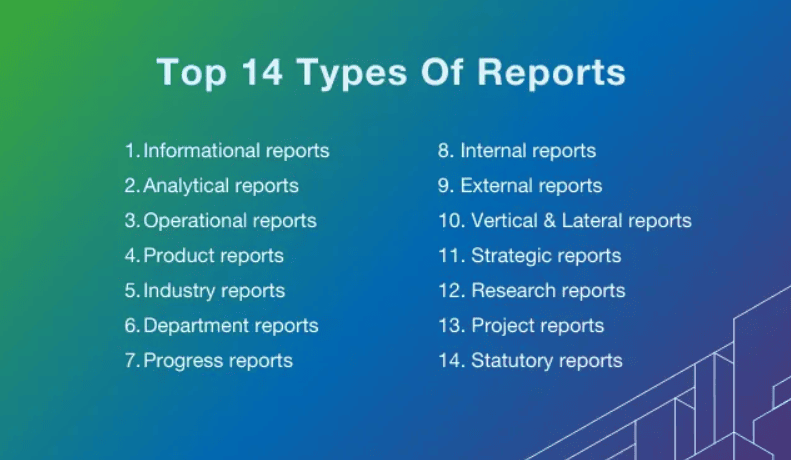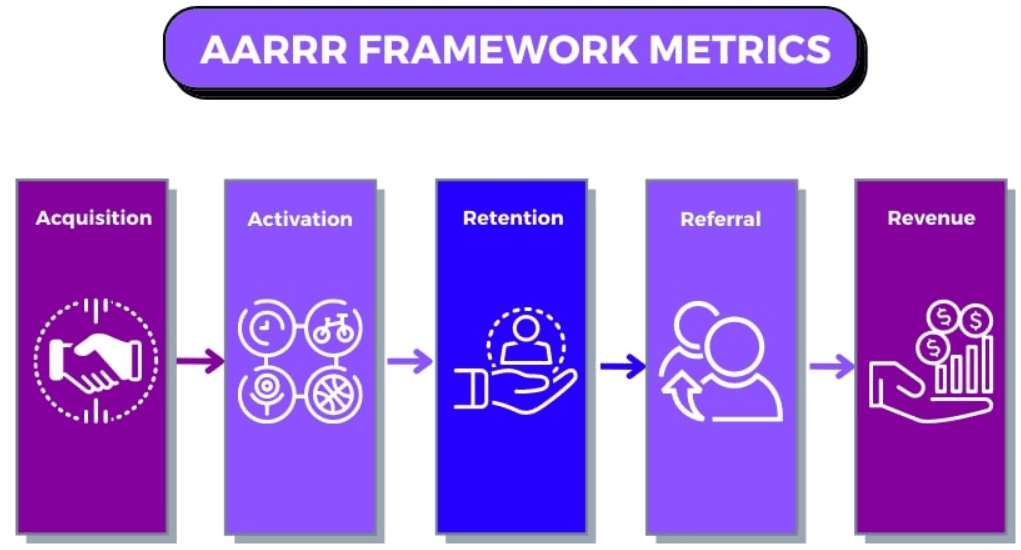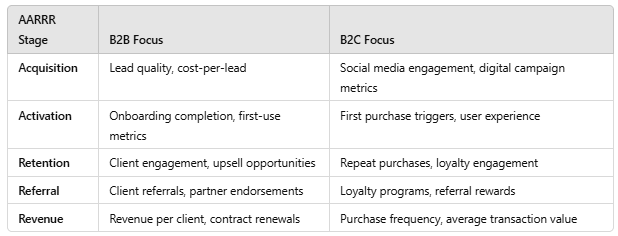ETL (Extract, Transform, Load) processes are vital for ERP (Enterprise Resource Planning) systems as they facilitate data integration from various departments and external sources, creating a unified, accurate data environment. ERP systems streamline operations across finance, HR, sales, inventory, and supply chains, but their effectiveness relies on accurate, consolidated data. ETL processes support this by transforming disparate data sources into a coherent, high-quality dataset, improving decision-making and operational efficiency.
The ETL Process: Building a Foundation for Data-Driven Insights
The ETL Process: Building a Foundation for Data-Driven Insights
Organizations are continuously seeking data-driven ways to accelerate growth and identify areas for improvement. Combining ETL (Extract, Transform, Load) processes with the AARRR (Acquisition, Activation, Retention, Referral, Revenue) framework allows businesses to streamline data, uncover actionable insights, and monitor the full customer journey effectively.

Data and information across an organization, from any industry, can be grouped into specific categories - a process which, according to the RIB team, leads to refined ETL processes as well as solutions!
ETL (Extract, Transform, Load) processes are essential for consolidating and preparing data to support various business analyses. By connecting data from multiple sources and presenting it in a uniform format, ETL processes allow businesses to identify trends, evaluate performance, and pinpoint growth areas. Here’s a breakdown of the ETL stages and their impact:
Extract: Gather raw data from various sources (e.g., CRM, marketing automation, sales data).
- Impact: By integrating multiple data sources, businesses gain a unified view of customer behaviors and operational metrics, critical for assessing the customer lifecycle.
Transform: Clean and format the data for analysis, converting it into consistent structures and units.
- Impact: Transformation refines data to support consistent analytics and ensures that insights are relevant and reliable, creating a foundation for the AARRR framework.
Load: Place the transformed data into a central database or warehouse, ready for further analysis and reporting.
- Impact: Centralizing data makes it accessible and scalable, which is essential for real-time decision-making and continuous improvement across the AARRR stages.

Applying the AARRR Framework to Drive Growth
Applying the AARRR Framework to Drive Growth
The AARRR framework is a powerful model for understanding and optimizing customer journeys, breaking down growth into five essential stages: Acquisition, Activation, Retention, Referral, and Revenue. When applied in tandem with ETL processes, the AARRR framework enables data-driven strategies that help organizations uncover and capitalize on growth opportunities.

1. Acquisition: Attracting new customers or users.
- ETL & AARRR Impact: ETL supports acquisition by providing data-driven insights into the most effective marketing channels. Through analysis, companies can optimize campaigns to attract high-quality leads.
- B2B: Focuses on lead generation quality, campaign efficiency, and sales channels.
- B2C: Emphasizes digital marketing performance, social media engagement, and website traffic.
2. Activation: Encouraging first-time users to engage or make a purchase.
- ETL & AARRR Impact: Data transformation highlights key activation behaviors, like onboarding completion rates and initial product use.
- B2B: Analyzes initial customer touchpoints to enhance onboarding and reduce churn risk.
- B2C: Focuses on factors that drive first purchases, such as offers, ease of use, and incentives.
3. Retention: Maintaining engagement and preventing churn.
- ETL & AARRR Impact: ETL and AARRR identify patterns in user behavior that predict churn, allowing businesses to take proactive retention measures.
- B2B: Tracks ongoing engagement in long sales cycles, identifies at-risk clients.
- B2C: Evaluates repeat purchases, email engagement, and subscription renewals.
4. Referral: Leveraging existing customers for word-of-mouth promotion.
- ETL & AARRR Impact: Referral data shows which customers are brand advocates and which initiatives drive referral growth.
- B2B: Analyzes referral patterns in client networks, identifying high-impact advocates.
- B2C: Measures referral effectiveness from loyalty programs, influencer marketing.
5. Revenue: Optimizing monetization and maximizing value per customer.
- ETL & AARRR Impact: ETL processes help connect revenue back to acquisition sources and retention factors, allowing clear ROI analysis.
- B2B: Links revenue to sales strategies, ROI, and pricing models.
- B2C: Focuses on purchase frequency, average order value, and discount impact.

Key Benefits of ETL for ERP Systems and Business Aspects
Key Benefits of ETL for ERP Systems and Business Aspects
Enhanced Data Accuracy
- ETL cleans and standardizes data, reducing inaccuracies that could disrupt ERP functionality. By centralizing data, ETL creates a reliable single source of truth for the organization, essential for accurate ERP-driven reporting.
Improved Decision-Making
- Clean and well-structured data supports effective decision-making across departments. For instance, finance teams gain insights into cash flow trends, while HR can analyze workforce needs, helping leaders make data-backed decisions for each business aspect.
Seamless Cross-Functional Analysis
- Integrating data from sales, inventory, customer service, and other departments enables cross-functional insights that benefit operations holistically. ETL supports this by enabling connections between ERP and non-ERP data sources, offering comprehensive views of customer needs, market trends, and resource requirements.
Scalability and Efficiency
- As businesses grow, ETL processes ensure that ERP systems can efficiently manage large volumes of data. This scalability means ETL can support organizations during growth or in response to market changes, reducing the strain on ERP systems and ensuring data remains accessible and actionable.

How AARRR and ETL Together Help Identify and Address Root Causes
How AARRR and ETL Together Help Identify and Address Root Causes
The combination of ETL and the AARRR (Acquisition, Activation, Retention, Referral, Revenue) framework empowers organizations to track customer journeys, pinpoint performance gaps, and optimize customer lifecycle stages. This synergy enables organizations to backtrack and identify root causes when issues arise in specific lifecycle stages. Here’s how each aspect contributes and where best practices come into play.
Key Areas and Steps for Root Cause Analysis with ETL and AARRR
Identifying Acquisition Bottlenecks
- ETL Role: Integrates marketing and lead data, helping identify patterns in sources with low acquisition rates.
- AARRR Role: Acquisition data within AARRR helps assess effectiveness by channel and campaign.
- Best Practice: Regularly review acquisition metrics (e.g., lead conversion rates) and apply ETL to adjust marketing strategies and spend.
Analyzing Activation Drop-Offs
- ETL Role: Links data from onboarding tools, CRMs, and product usage.
- AARRR Role: Activation within AARRR can pinpoint at which point customers disengage.
- Best Practice: Use ETL to regularly import onboarding completion rates, track against benchmarks, and identify common points where users fail to activate.
Assessing Retention Challenges
- ETL Role: Pulls data from customer service, usage reports, and subscription renewals.
- AARRR Role: Retention metrics within AARRR identify patterns around why customers leave.
- Best Practice: Collect data on customer complaints, frequency of use, and satisfaction. Use ETL processes to monitor these trends and connect with CRM systems to automate retention efforts.
Evaluating Referral Impact
- ETL Role: Gathers data on referral campaigns and tracks referral growth over time.
- AARRR Role: Referral insights in AARRR allow analysis of customer referral behaviors, understanding which customers are advocates.
- Best Practice: Measure referral sources and impacts by creating reports from ETL processes. Optimize referral programs based on behavioral data, promoting those with the highest referral success rates.
Maximizing Revenue Opportunities
- ETL Role: Aggregates transaction data, user spending habits, and upsell activities.
- AARRR Role: Revenue metrics highlight the impact of customer journeys on ROI.
- Best Practice: Review upsell and cross-sell success rates regularly, and leverage ETL processes to centralize revenue data, allowing the organization to better target high-potential customers.
Enabling Root Cause Analysis and Growth with ETL and AARRR
Enabling Root Cause Analysis and Growth with ETL and AARRR
Centralized Data Integration
- Action: Use ETL to centralize data sources across departments, ensuring a single view of the customer.
- Impact: Enhances organizational ability to spot customer drop-offs, conversion barriers, and opportunities in any AARRR stage.
Automated Dashboards for AARRR Metrics
- Action: Implement ETL-supported dashboards that visualize AARRR metrics and monitor lifecycle behaviors in real time.
- Impact: Real-time dashboards allow instant recognition of stage-specific issues, supporting rapid adjustments and continuous optimization.
Continuous Feedback Loops
- Action: Incorporate AARRR metrics into ETL data pulls from customer feedback tools, regularly analyzing satisfaction scores and user engagement.
- Impact: Feedback integration identifies areas needing improvement and generates insights that refine customer experiences.
Data-Driven Lifecycle Messaging
- Action: Use ETL and AARRR to support lifecycle messaging automation, ensuring communication is timed, relevant, and supports each stage’s goals.
- Impact: Strengthens customer engagement and conversion rates, aligning messaging with observed customer behaviors.
Best Practices for ETL and AARRR Integration
Ensure Data Quality
- Practice: Regularly cleanse and standardize data sources to prevent discrepancies.
- Benefit: Reliable data leads to more accurate AARRR analysis, directly supporting root cause identification.
Map AARRR to Departmental KPIs
- Practice: Align AARRR metrics with departmental KPIs, ensuring each stage has clear, measurable goals.
- Benefit: Makes it easier to identify bottlenecks, with a clear view of which teams or functions need to take action.
Create Custom AARRR Dashboards
- Practice: Customize dashboards to highlight AARRR metrics, with filters by client tier, acquisition channel, or geographic region.
- Benefit: Targeted dashboards make it simpler to trace issues back to root causes, allowing organizations to take action by segment.
Utilize Predictive Analytics
- Practice: ETL data should support predictive models to forecast customer journey behaviors, especially in retention and revenue.
- Benefit: Predictive insights help organizations preempt issues before they impact performance, adding a proactive layer to AARRR.
Run AARRR-Based Drills for Hypothetical Scenarios
- Practice: Regularly test ETL and AARRR frameworks by simulating issues (e.g., low retention) to see how easily root causes are identified.
- Benefit: Helps teams stay prepared to quickly address real-time issues, reinforcing AARRR and ETL responsiveness across the organization.
ETL processes, in conjunction with the AARRR framework, form a powerful foundation for identifying growth opportunities and addressing underlying causes of performance issues. For organizations utilizing ERPs, these processes offer seamless integration of comprehensive data and customer lifecycle metrics, revealing areas for growth and improvement. By employing lifecycle messaging automations and aligning ETL and AARRR insights, organizations can engage customers at each stage more effectively, promoting loyalty, satisfaction, and overall profitability. This approach sets the stage for a data-empowered organizational culture that is agile, customer-centric, and growth-oriented.


